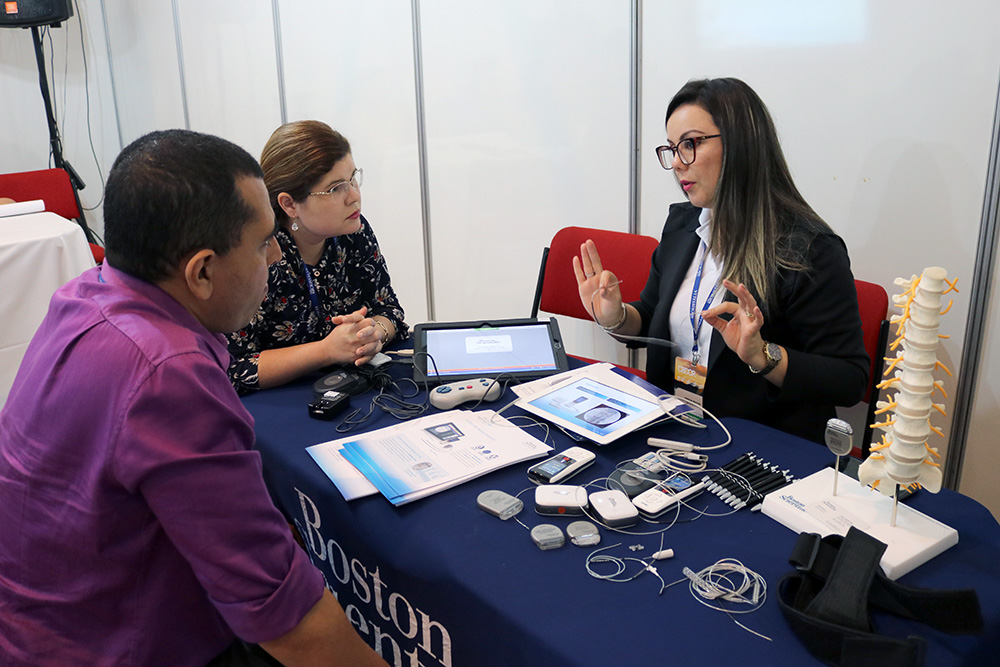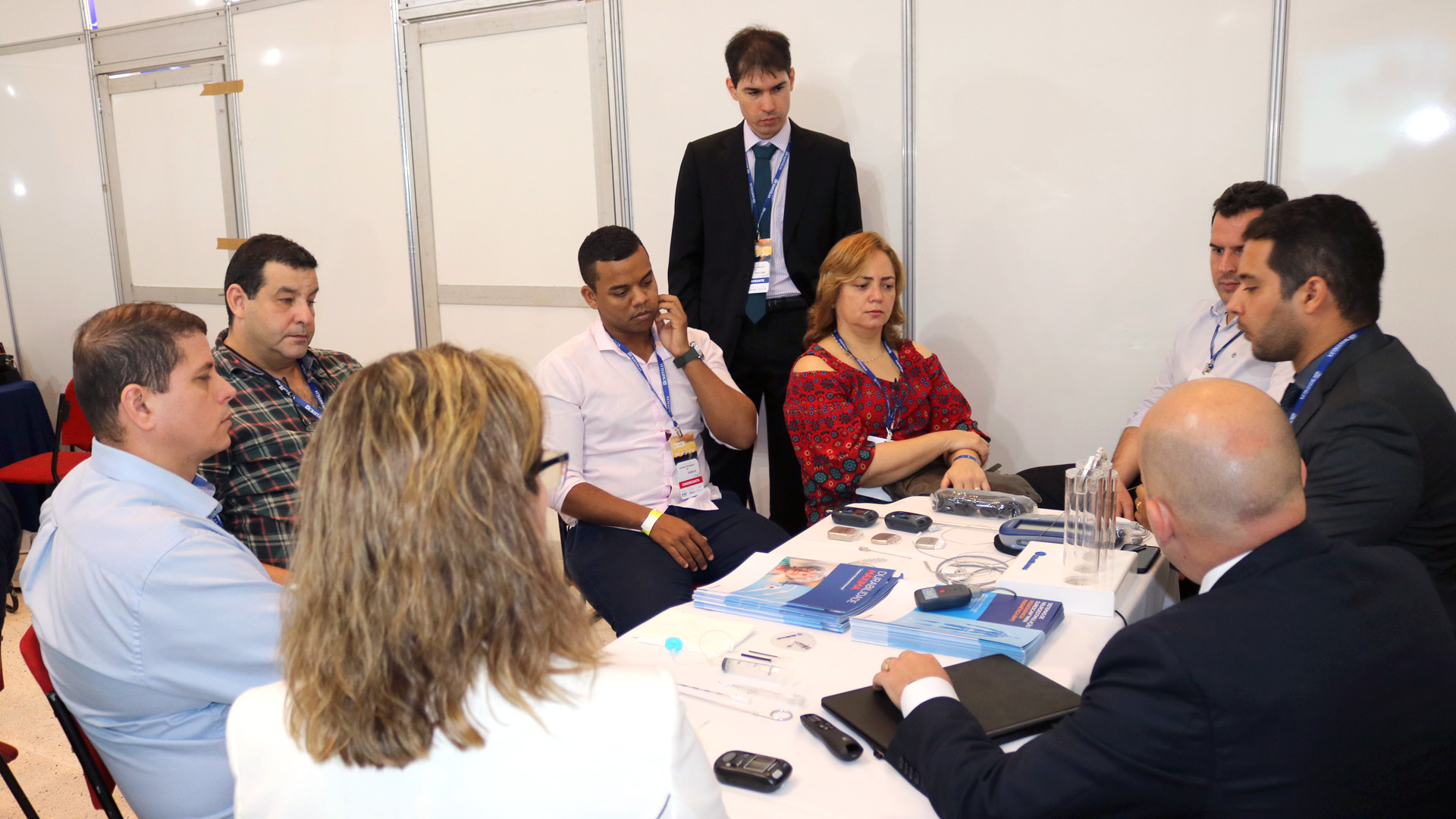Chronic pain is something that impacts people's quality of life in countless ways. It can make basic movements (such as bending down) difficult, affect productivity at work, and even interfere with interpersonal relationships. Aware of the need and expectation for promising new treatments, researchers at Edmond and Lily Safra International Institute of Neuroscience (IIN-ELS) promoted a training of medical professionals about a new technique with great therapeutic potential, neuromodulation.
O Invasive Spinal Neuromodulation Course was held for the first time in Brazil in Natal-RN, during the 13th Brazilian Congress of Pain (CBDor), an event organized by Brazilian Society for the Study of Pain (SBED). In addition to IIN-ELS/ISD and SBED, the training was attended by Brazilian Society of Interventional Pain Medicine (Sobramid) and the three companies authorized by the National Health Surveillance Agency (Anvisa) to market neuromodulation equipment for pain treatment in Brazil: Boston Scientific, Medtronic It is SJM/Abbott.
Neurosurgeon and researcher at IIN-ELS Hougelle Simplicio explains that neuromodulation therapy helps treat pain through electrical stimulation of the spinal cord of patients. To do this, an electrode is implanted inside the spinal column, over the spinal cord. A wire installed under the skin connects this electrode to an electrical stimulus generator, similar to what is done with a cardiac pacemaker. “This continuous stimulation of the spinal cord alters the perception of pain in the patient, improving chronic pain between 50 and 90%”, informs Hougelle.

The indication of neuromodulation and the implantation of equipment can only be performed by medical professionals, trained in chronic pain care and specific techniques. The treatment applies exclusively to some cases of chronic pain, those in which the person feels for months or years, without improvement with conventional treatments or surgeries.
The course coordinated by IIN-ELS included two parts. The first, theoretical, addressed basic principles of neuromodulation. The practical part put participants in contact with the real systems of the manufacturing companies that operate in Brazil, with explanations from product experts and tutoring from doctors who already work in the area. “The great difference in this course was bringing together medical societies and the private sector to train professionals in the application of this new therapy, understanding what type of patients can benefit from the treatment, how to perform the implant and program the equipment”, comments Hougelle.


IIN-ELS pioneering research in Neuromodulation
Neuromodulation is one of the main lines of research in IIN-ELS/ISD, located in Macaíba-RN. The researchers' objective is to develop more efficient methods (e.g. electrodes and generators), in addition to understanding pathophysiological mechanisms that contribute to future generations of neuromodulators, a major area for research and development in biomedical engineering. “Our research begins with computational modeling. The best results are forwarded to preclinical testing and then human clinical studies“, explains Hougelle.
The first IIN-ELS study on neuromodulation that reached the testing phase in human patients was with Parkinson's therapy. Brazil is one of only three countries in the world that already carries out tests on humans in this area, along with Canada and France.
Typically, patients are given brain stimulation to treat tremor and movement problems. However, these stimulations do not improve the walk, known as gait by researchers. Scientific work from IIN-ELS has shown that electrical stimulation of the spinal cord improves gait.
The first work on this topic was carried out with rodents in Duke University and published in 2009, in Science magazine. Preclinical tests were carried out at IIN-ELS in Macaíba-RN with non-human primates and were published in 2014 demonstrating the effectiveness of spinal cord stimulation. More recently, research in France and São Paulo with spinal cord stimulation in humans showed significant results for gait recovery in people with Parkinson's. This is evidence of the importance for Brazil to invest in research and development for the country to innovate in biomedical engineering.
Text and Photos: Luiz Paulo Juttel / Ascom – ISD
Communication Office
comunicacao@isd.org.br
(84) 99416-1880
Santos Dumont Institute (ISD)
Social organization that maintains ties with the Ministry of Education (MEC) and whose mission is to promote education for life, forming citizens through integrated teaching, research and extension actions and to contribute to a fairer and more humane transformation of the Brazilian social reality.















